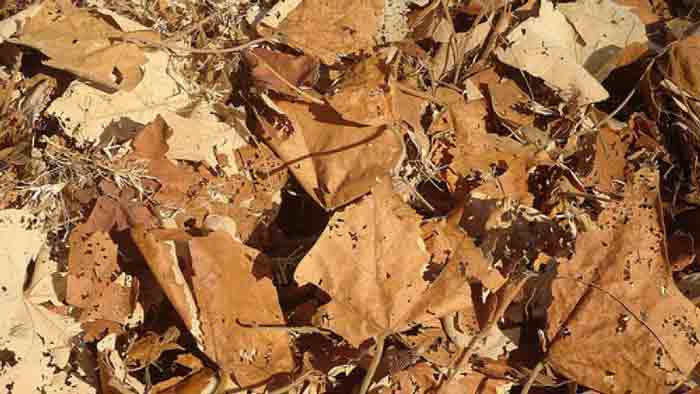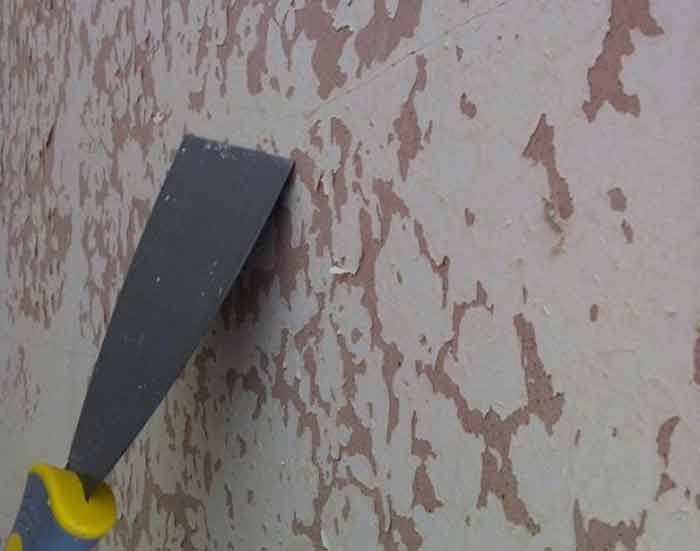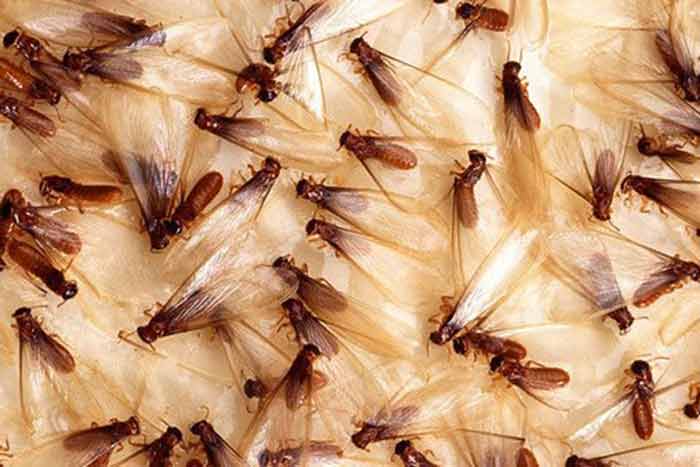Termites form a great nuisance to your home if not dealt with early. Their destructive effects are evident when they begin damaging your books, wall papers, furniture and even the carpets. In order to curb them, here is some information you ought to know about what are some of the causes and attractants of termites in your home.
Table of Contents
Causes
Here are some causes
Geography
If you live in an area that is susceptible to the infestation of termites, then you are likely to be attacked. Owning and living in a home that is in the warmer and wetter areas puts you at greater risk of infestation compared to other areas.
Air
Air that is stagnant yet moist is the perfect and most conducive ground for the breeding of termites. You ought to therefore ensure continuous circulation of dry air around your home to keep them away. Electric fans around the moist areas can help.
The earth
Any part of your home that comes into direct contact with the earth or soil is a pre-exposition to the termite infestation. You should keep the soil and foliage about 28 inches away from the foundation of your home.
Trees & Excess wood
Any wood that you leave on the ground to rot or idle can fuel the infestation of termites into your home. The piles can attract small colonies that can grow with time and you will finally have large infestations in your home.
Growing Trees & Dry leaves
The presence of trees in your compounds can lead to the fall of leaves thus giving a pathway to termites gaining entry into your home.
The trees hinder sunlight from reaching the ground and this impairs the evaporation of moisture from the ground and this is reason enough for termites to infest your home.
Cracks in your building
Cracks are common on the foundations of your house. These offer great opportunities for the termites to find ambient hiding places.
The subterranean termites for instance use these as an avenue to gain access to your house. The swarmer termites also use the cracks around your windows and doors to enter your house and build colonies.
What attracts them
In as much as all termites are attracted to wood, they can have very specific attractants that they prefer. This is dependent on the type of termites you are looking at. In discussing the attractants, it is easily done based on the type. Weather conditions, moisture and the geographical locations all weigh in heavily in attracting termites.
Moisture
Whenever there are leakage of pipes, poor or improper drainage and poor air flow, moisture is likely to increase and pile up. This attracts the termites and more so the dampwood and subterranean termites. The dampwood termites give preference to the damaged wood and the subterranean termites thrive in the environment with adequate moisture.
They use the moisture to make tubes that reduce the distance between them and sources of food. You should ensure that you keep any containers that are likely to keep moisture near the foundation of your house.
Heat
Winter is an enemy of termites. During this time, they are not active and therefore, your house can act as an environment suitable for them to thrive. They will always do everything possible to enter cracks that have some warmth so as to keep away from the cold.
Dry wallpaper
They eat away the thin cardboard or paper which you use to cover your wall. This becomes even worse when the paper is in a dark places because the termites find a chance to hide from the predators.
Darkness
The dark is liked by termites because it is a protection against any predators in the environment. It also offers them enough room to construct their mud tunnels that are made of mud long enough without being noticed by you. The flying termites are on the contrary attracted to light.
Improper drainage
Pooling of rain water around the foundation of your house is an attractant to termites. The gutters around your home ought to be flowing to allow the water drain so as to limit the amount of moisture in your home.
A jungle in the backyard of your home
You might focus on other aspects of controlling termites like removing mulch and wood in your home, but you forget the overgrown jungle in your background. Big or small jungles around your home and especially the stumps cause termites infestation.
The stumps of fallen trees are likely to collect a lot of water, mold or fungal growths. Their deep roots and alive and they can even spread to the foundations of homes and create cracks that further attract the termites. The neglected stumps can also be feeding points for the termites and thus make it easy for them to access your home.
Over clogged gutters
They have a knock on effect and these can call the termites into your home. The gutters that have not been cleaned for a long period of time collect dirt, plant materials, grime and hinder rain water from freely draining down into the earth.
In the long run, the filth will damage your house and this then leads to growth of moulds or damp marks on the ceilings, which then create a moist environment that is conducive for the survival of termites.
Moist soil
Adequate moisture in the soil that makes the foundation of your house can be the tunnel to infestation of termites. The moisture is in most cases created by the diversion of leaking pipes around the foundation or nonfunctioning gutters.
You should thus ensure you deal with any water or moisture that piles around the foundation of your house to eliminate this menace.
Piles of dirty clothes
Termites are lovers of warmth. Therefore, any piles that provides warm and moist environment can be great for the pests to thrive. This is especially if the environments are unhygienic. You should thus ensure that your home is clean and clear with adequate aeration.[1]
Clothing and laundry room
Your clothes are eligible for the damage by the termites. This is however rare but it happens. The clothes are made from materials like cotton which have cellulose as a chief ingredient.
Piles of newspaper and books
Termites find a lot of fun eating through the piles of newspaper and books in your shelves. They feed on anything that is made from cellulose (the basic component that makes the cell structure of plants).
In fact, most baits that are used to kill termites are made from treated paper or cardboard. When termites feed on the paper, they carry the remains to their colonies and thus continue feeding on it thus complete destruction.
Cardboard
This is a darling to the termites. The termites digest the cellulose in the board for food. A damp and wet cardboard is even more attractive to the pests.
Putting the cardboard in the dark for long periods makes it even more attractive to the insects. Therefore, the garages and attics encounter problems with the pests because of the ambient environment.
Music
The dry wood termites use the vibration from music to know the size of wood that is in their surroundings. This is thus an attractant to the termites because they will not need to spend more energy to look for the wood.
Over time, termites have shown great utilization of the rock music especially because of the vibrations that come with the kind of music. This is supported by studies that were done and published in the Washington daily Post by a staff writer. It is pointed out that termites eat through wood three times faster in the presence of rock music.
Ivy
It provides a bridge or a link for the termites and other bugs to come from the soil and then access the home. It can also hide the presence of termites at your home. The termites can use the ivy as a short cut to gain access to the food which is wood in your house.
Skirting boards
These are chief termite attractants. They are made of dry wood which is a feeding point and a living point for the termites in your home.
Garage
It can attract termites although it depends on what is stored in it. They can either be goldmines if they have wooden material or act as passageways to your home by the termites. Therefore, you ought to keep the storage units in your garage away from the wall to avoid running the risk.[2]
Does mulch attract/cause termites?
Any type of mulch around your home provides good cover and therefore increase the chances of termites getting access to your home. The termites can want to keep themselves warm and the moisture that is provided by the mulch is just enough for this. The termites are not drawn by the mulch but the moisture that results.
Unlike in other insects, the mulch does not facilitate the multiplication of the termites. It only provides cool environment for the living ones to exist. This does not mean you should not avoid applying mulch in your home but rather do it moderately as you watch to limit infestation.
Further Reading
- Termite Droppings-Drywood, what they look like, Health Risks, Clean vs Sawdust
- Formosan Termites Pictures, Signs Treatment & Damage
- How to Get Rid, Kill Termites + Treatment Cost
- What Causes & Attracts Termites?
- Do Termites Bite Humans? Pictures & Remedies
- Flying Ants vs Termites-Differences & Similarities
- Termite Inspection Cost, Procedure, how long it takes & Training
- Termite Colony-Queen, Soldier, Worker & King
- Drywood Termites Treatment Cost, Get rid & Damage
- Termite Bond Cost, Benefits
- Termite Baits, Stations & DIY Traps
- Dampwood termites Pictures, Damage & Treatment
- Termite Tenting & Fumigation- Cost, Preparation, Safety & Cleaning After
- Termite Barriers (Shields): Types, Cost, how they Work & Products
- Termites Damage, Pictures, Repair Cost, Ceiling, Floors, Wood & Fix
- Best Termite Sprays-Orange Oil (DIY), Boric Acid & Spectracide Reviews
- Termites Life Cycle & Span-Eggs, Larvae, Baby & Adults
- How to Prevent Termites-Tips to Protect your Home
- Signs of Termites Infestation-How do you know if have you them?
- What do Termites look like? Pictures, Size, Color & Look-alikes
- Termites: Where From, Habitat, Eat, Noise, Types +more!
- Subterranean Termites Swarmers Treatment Cost, Damages & Pictures
- Flying Termites with Wings (Swarmers) Pictures & How to get Rid
Sources
[1] https://www.quora.com/Does-dirty-laundry-attract-any-form-of-pest
[2] https://www.rentokil.com/blog/8-termite-hotspots-how-to-prevent-termites/#.Wp0JoWpua00


